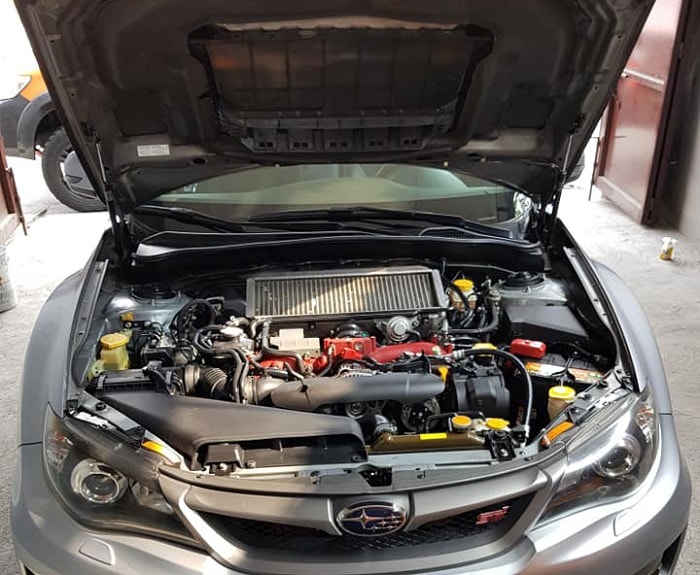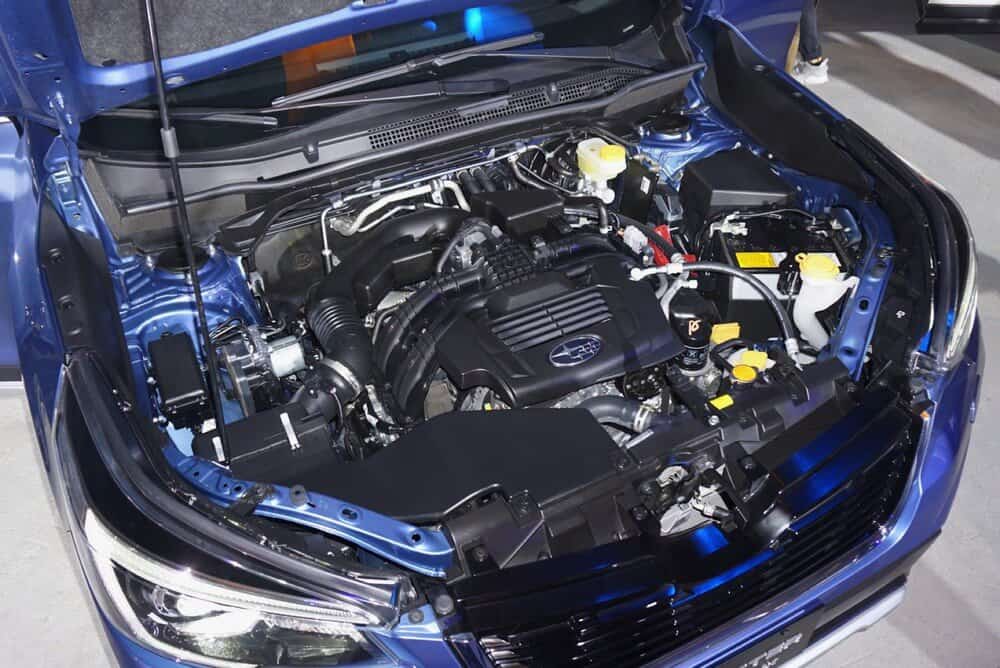The fuel pump is an essential part of every vehicle’s fuel distribution system. In Subarus, a failing or broken fuel pump can cause a variety of problems that owners may discover. What are Subaru bad fuel pump symptoms?
Some common Subaru fuel pump symptoms include a loss of power or hesitation when accelerating from a halt or merging into traffic. The engine could potentially stumble or stall unexpectedly. Another warning flag is when an engine cranks but does not start. Low fuel pressure warning lights may also appear on newer models. As the fuel pump fails, these symptoms may develop. The car may become almost immobile until the gasoline pump is replaced. Early detection of fuel pump failure can help to avoid more major driveability concerns and expensive repairs in the future.

Contents
What Are Subaru Bad Fuel Pump Symptoms?
A failing fuel pump in a Subaru can manifest through various symptoms.
#1. Engine Sputtering
A common indication of a malfunctioning fuel pump is sputtering engine performance. This happens when the fuel pump has trouble keeping the engine’s fuel supply constant. Particularly during acceleration or at greater speeds, it causes irregular bursts of power and hesitancy.
#2. Difficulty Starting
Another common sign of a failed fuel pump is difficulty starting the engine. The engine can take several tries to start, or it might not start at all, as the pump loses its capacity to deliver gasoline effectively. Owners of Subarus may find this especially annoying because it affects the car’s dependability.
#3. Decreased Fuel Efficiency
Fuel pump problems are also indicated by a decrease in fuel efficiency. The fuel consumption of the vehicle per mile may rise if the pump is unable to supply the engine with a sufficient amount of fuel. It causes more frequent trips to the gas station and a loss in fuel efficiency.
#4. Engine Stalling
An even more serious sign of a failed fuel pump is an engine that stalls. A sudden loss of fuel flow to the engine might happen when the pump malfunctions, particularly when going uphill or during acceleration. This can be a serious risk to your safety, especially when there is heavy traffic or other dangerous driving circumstances.
#5. Whining Noise
Another indication that the fuel pump is failing is a distinct whining sound that comes from the fuel tank region when the engine is operating. This noise usually signals an impending failure and is the result of worn bearings or a failed motor inside the pump.
#6. Loss of Power
An additional indicator of fuel pump issues is power loss, especially during acceleration. The vehicle may exhibit a discernible drop in power and performance if the fuel pump is unable to supply the engine with enough fuel.
#7. Check Engine Light
Low fuel pressure or fuel system defects are two examples of fuel pump-related problems that might occasionally cause the dashboard’s check engine light to illuminate.
#8. Engine Overheating
In severe circumstances, insufficient fuel delivery from a faulty fuel pump may cause an engine to overheat. Poor combustion and elevated engine temperature are the outcomes.
How To Fix Subaru Bad Fuel Pump?

Fixing poor fuel pump symptoms in a Subaru normally entails diagnosing the problem and then repairing it. Here’s a step-by-step method to fix these symptoms:
Diagnosis
Conducting a comprehensive inspection of the car to ensure that the symptoms are truly caused by a malfunctioning fuel pump. You should use a pressure gauge to measure the pressure in the fuel system. You can also use a scan tool to recover any diagnostic trouble codes (DTCs) stored in the vehicle’s on-board computer.
Check Fuel Filter
Before starting with fuel pump repair or replacement, you should inspect the fuel filter. A blocked or dirty fuel filter might mimic the symptoms of a malfunctioning fuel pump. If the gasoline filter is found to be clogged, it should be replaced before proceeding with troubleshooting.
Accessing the Fuel Pump
In most Subaru, the fuel pump is housed within the gasoline tank. To access the fuel pump, normally you either remove the rear seat or use an access panel in the trunk or beneath the rear seats. Refer to the vehicle’s service manual for detailed information on how to reach the fuel pump.
Replacement or Repair
You should check the fuel pump for wear or damage once it is accessible. If the pump is found to be faulty, it will need to be replaced with a new one. To cut expenses, specific gasoline pump parts could occasionally be possible to be fixed or replaced separately.
Installation
As you install the new fuel pump, make sure all of the connections are tight and oriented correctly, following the manufacturer’s directions. When installing, take care not to harm any gaskets or seals.
Testing
To ensure that the problem has been fixed, test the fuel pressure once more after installing the new fuel pump. Launch the engine, then keep an eye out for strange sounds or movements. After the repair is finished, make sure everything is working as it should.
Reassembly
Put back together any parts that were taken apart to get at the fuel pump after the repair is verified.
Final Inspection
Test drive the car to make sure the symptoms are completely gone and the Subaru is performing as it should. Additional diagnosis might be required if any problems continue.
Read More: Why Do Subarus Blow Head Gaskets?
How Long Do Subaru Fuel Pumps Last?
There are several variables that can affect how long a Subaru fuel pump lasts. These include one’s driving style, upkeep routines, surrounding circumstances, and the gasoline pump’s actual quality. A well cared-for Subaru gasoline pump should typically last 100,000–150,000 miles or beyond. However, a number of things, including contamination from unclean fuel, excessive wear and tear, or manufacturing flaws, can cause certain fuel pumps to fail before their time.
Regular maintenance, such as replacing the fuel filter at regular intervals, as well as utilizing high-quality fuel, can help the fuel pump last longer. Furthermore, avoiding driving with low fuel levels can save the fuel pump from running empty, which could cause harm.
While there is no fixed lifespan for a Subaru fuel pump, keeping watchful for indicators of a failing fuel pump can assist spot difficulties early and avert more major problems. If you observe any symptoms of a faulty fuel pump, you should repair the problem right once.
Overall, with regular maintenance and care, Subaru gasoline pumps can last for many years and miles, adding to the vehicle’s dependability and durability.